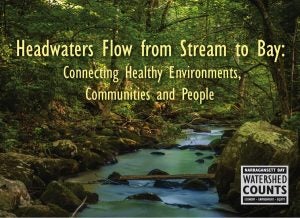Nicole E. Rohr, Assistant Director of the Coastal Institute at URI
On September 16, the Coastal Institute presented the 2016 Watershed Counts report to the New Englan d Interstate Water Pollution Control Commission (NEIWPCC) Board of Commissioners. This group has representatives from the seven New England states, including Rhode Island and Massachusetts, bi-state home to Narragansett Bay and its estuary. The commissioners noted that the report highlighted what partners can accomplish when they work together, as well as served as an example of effective communications to engage the public on environmental health.
d Interstate Water Pollution Control Commission (NEIWPCC) Board of Commissioners. This group has representatives from the seven New England states, including Rhode Island and Massachusetts, bi-state home to Narragansett Bay and its estuary. The commissioners noted that the report highlighted what partners can accomplish when they work together, as well as served as an example of effective communications to engage the public on environmental health.
Released in June by the Coastal Institute and the Narragansett Bay Estuary Program, on behalf of over 60 partner organizations, the 2016 Watershed Counts report features case studies of success stories as well as challenges regarding headwater streams and their connection to Narragansett Bay. The report also sheds light on the people and the processes behind successful enterprises that have led to a healthier watershed system to the benefit of its residents—plant or animal.
One such story was spearheaded by a unique collaboration among the Providence Police, the Olneyville Housing Corporation, and the Woonasquatucket River Greenway Project to clean up the area next to the river. Unhealthy debris ranged from original industrial waste to present day trash. The cleanup not only improved the health of the river, but reduced crime, built community, and provided a safe place for kids and families to recreate. This model partnership was further recognized in an op-ed by Coastal Institute Director Judith Swift: It takes a village to clean Woonasquatucket River.
We invite you to checkout the changes that are occurring in the watershed to protect headwaters, the bay, and the connection between them. For more information on Watershed Counts, please visit our website at http://watershedcounts.org.
